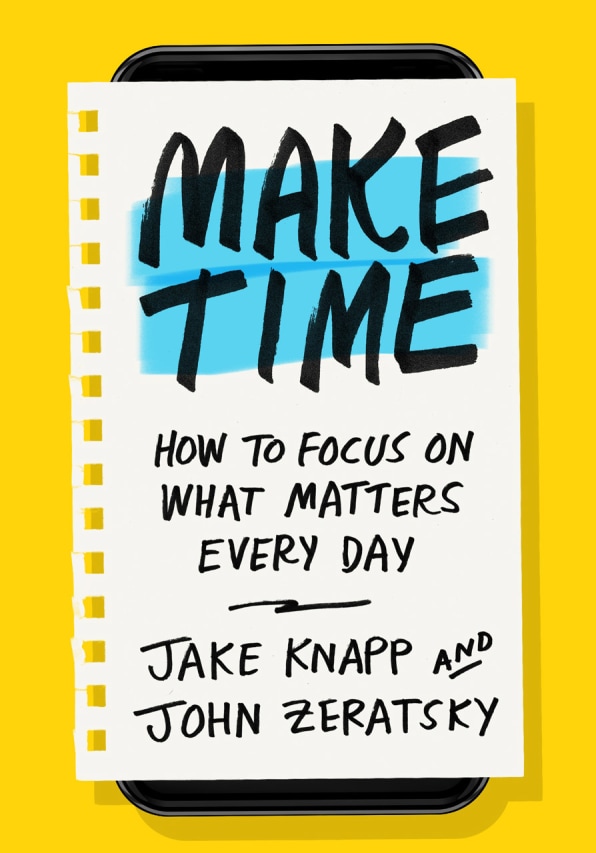It’s easy to get stuck in a default caffeine habit–like pouring yourself a coffee each time you take a break at work. Caffeine is a (mildly) addictive drug, so even small unintentional behaviors can quickly become chemically reinforced habits.
But caffeine is powerful stuff, and because it has a direct effect on your energy level, you should drink it with intention rather than on autopilot.
THE RELATIONSHIP BETWEEN CAFFEINE AND THE BRAIN
To the brain, caffeine molecules look a lot like a molecule called adenosine, whose job is to tell the brain to slow down and feel sleepy or groggy. This is helpful for getting ready for bed, but is not so useful in the afternoon when we’re trying to crank out that report.
What do we do? We reach for caffeine. When it shows up in the brain, the caffeine binds to the receptors where the adenosine is supposed to go. The adenosine is left to just float around, and as a result, the brain doesn’t get the sleepy signal. However, that caffeine doesn’t technically give you an energy boost. What it does is block you from having an energy dip caused by adenosine-induced sleepiness. Once the caffeine wears off, all that adenosine is still hanging around, ready to pounce. If you don’t re-caffeinate, you crash. Over time, your body adjusts to more and more caffeine by producing more and more adenosine to go. The adenosine is left to just float around, and as a result, the brain doesn’t get the sleepy signal. However, that caffeine doesn’t technically give you an energy boost. What it does is block you from having an energy dip caused by adenosine-induced sleepiness. Once the caffeine wears off, all that adenosine is still hanging around, ready to pounce. If you don’t re-caffeinate, you crash. Over time, your body adjusts to more and more caffeine by producing more and more adenosine to compensate. This is why if you normally drink lots of caffeine, you feel groggy or get a headache when you don’t have it.
Of course, every person processes and reacts to caffeine in a slightly different way, depending on metabolism, body size, tolerance, and even DNA. These guidelines, however, are a great start that can help you form smart caffeine habits.
1. WAKE UP BEFORE YOU CAFFEINATE
In the morning, your body naturally produces lots of cortisol, a hormone that helps you wake up. When cortisol is high, caffeine doesn’t do much for you (except for temporarily relieving your caffeine addiction symptoms). For most folks, cortisol is highest between 8 a.m. and 9 a.m., so for ideal morning energy, experiment with having that first cup of coffee at 9:30 a.m.
2. CAFFEINATE BEFORE YOU CRASH
The tricky thing about caffeine is that if you wait to drink it until you get tired, it’s too late: The adenosine has already hooked up with your brain, and it’s hard to shake the lethargy. Instead, think about when your energy regularly dips–for most of us, it’s after lunch–and drink your (non-sugary) caffeinated beverage of choice 30 minutes beforehand.
3. TAKE A CAFFEINE NAP
As an alternative, one slightly complicated but high-yield way to take advantage of caffeine mechanics is to wait until you get tired, drink some caffeine, then immediately take a 15-minute nap. The caffeine takes a while to absorb into your bloodstream and reach the brain. During your light sleep, the brain clears out the adenosine. When you wake up, the receptors are clear and the caffeine has just shown up. You’re fresh, recharged, and ready to go. Studies have shown that caffeine naps improve cognitive and memory performance more than coffee or a nap alone does.
4. MAINTAIN ALTITUDE WITH GREEN TEA
To keep a steady energy level throughout the day, try replacing high doses of caffeine with more frequent low doses. Green tea is a great option. Try substituting two or three cups of tea for every cup of coffee you’d normally have. This keeps your energy level more consistent and steady throughout the day, avoiding the energy peaks and valleys you get from something super caffeinated like coffee.
5. BE STRATEGIC
Life is a lot like the video game Mario Kart: You’ve got to use your turbo boosts strategically. Try to time your caffeine intake so that you’re wired right when you start on your important tasks. Both of us apply this technique in the same simple way: We make a cup of coffee just before we sit down to write.

6. LEARN YOUR LAST CALL FOR CAFFEINE
What most people don’t realize is that the half-life of caffeine is five to six hours. If the average person has a coffee at 4 p.m., half the caffeine is out of the bloodstream by 9 or 10 p.m., but the other half is still around. This means that at least some caffeine is blocking some adenosine receptors for many hours after you drink it, and very possibly interfering with your sleep and in turn your next day’s energy.
You’ve got to experiment to figure out your own unique “Last Call for Caffeine,” but if you have trouble sleeping, your last call might be earlier than you think. Experiment with cutting yourself off earlier and earlier and note if and when it becomes easier to fall asleep.
This article was adapted from Make Time: How to Focus on What Matters Every Day by Jake Knapp and John Zeratsky. It is reprinted with permission from Currency, an imprint of The Crown Publishing Group, a division of Penguin Random House.

Recent Comments